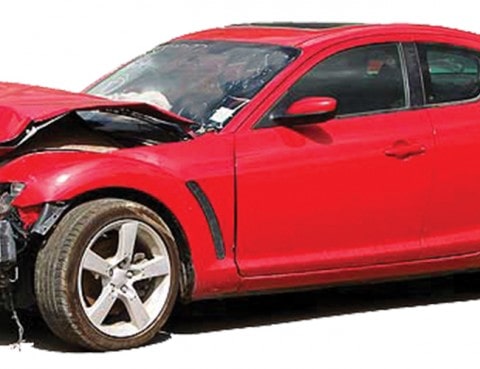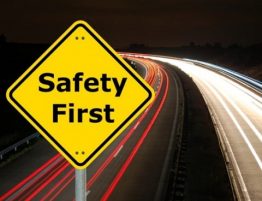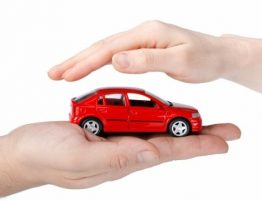
CONSUMER’S GUIDE TO COLLISION REPAIR
How Do I Choose a Collision and Refinish Center?
As the owner of a motor vehicle involved in an accident or submitting an insurance claim, you have the right to choose the shop where you wish to have your vehicle repaired. Use your descression, becarfull of backyard bob who offers to do the job for next to nothing but also be wary of large shops that need to turn a high volume of repairs just to pay their lease. Sure they might have an impessive facuility, but who is the one paying for it? You are.
Do I Need More Than One Estimate?
No. Select a repair facility that you feel comfortable with, then notify your agent or insurance company, or ask the shop to call the involved insurance company on your behalf.
DRP Body Shops – What Are They?
Direct Repair Programs (DRP) or insurance company referrals of certain repair facilities could be known as: State Farm’s “Service First” program, Allstate’s “PRO” program, USAA’s “STARS” program, Progressive’s “Total Pro or Concierge” program, and Nationwide’s “Blue Ribbon” program. Please refer to our glossary of other known insurance company DRF or referral program names.
Although insurance companies refer to direct repair programs differently, they essentially mean the same thing. DRP repair facilities are shops that have formed strategic alliances with insurers. The shop meets the insurance company’s criteria of their specific program and the shop agrees to do business in that manner. The insurance company’s purpose of DRP (Direct Repair Programs) is to streamline the claims settlement process and they work closely with a select repair facility to accomplish that. The shop agrees to provide many of the administrative duties of the insurance carrier in exchange for the referral. All insurance companies, just like repair facilities are not the same. It is the consumer’s responsibility to determine if this program is what you want, or if this is how you want your vehicle repaired. The repair facility must explain the repair process to you, the vehicle owner. It should be understood and agreed upon on what is being repaired vs. what is being replaced, and what type parts are being utilized in the repair process prior to the vehicle owner authorizing the shop to proceed with the vehicle repairs. It is the consumer’s responsibility and right to choose the repair facility of their choice and authorize the repairs based on a thorough and agreed upon damage evaluation. DRP’s (Direct Repair Programs) are an optional program of the insurance carrier. The consumer is NOT required or obligated to use a DRP repair facility.
Notify Your Insurance Company.
Before authorizing any repairs, notify your insurance company or agent and tell them where the damaged vehicle can be inspected. Most, if not all,
insurance policies require notification and they will likely have questions regarding your accident that only you can answer. The insurance company may wish to send an adjuster of their choice to inspect the vehicle and review the shop’s estimate prior to repair. Some insurers have drive-in claims centers that also could be considered if the vehicle is safe and driveable.
Is the Work Guaranteed?
Most collision repair centers warranty their collision work to some degree. Ask to see a copy of the shops written warranty before repairs are started and have any information you do not understand clarified. Make sure the terms of the warranty are acceptable to you. Make sure you receive a copy of the finalized invoice itemizing repairs including any supplements. Verify that you are satisfied with the quality of repairs made to your vehicle prior to payment.
What Do I Do if I Am Not Satisfied With Repairs After Picking Up My Car?
Immediately contact the repair shop and they will address any concerns you may have.
Will the Repair Shop Have a Rental Car Waiting For Me When I Drop Off My Vehicle?
If you need a rental car to drive while your car is in the shop, most shops can arrange and reserve one for you ahead of time.
Will The Collision Repair Shop Help Me Process My Claim?
Some shops will submit the estimate and repair bill to your insurance company in your behalf. However, you are still responsible for the payment to the shop. Talk to the shop owner or manager, they will attempt to make the transaction as seamless as possible.
What If Repair Costs Exceed the Original Estimate?
Often times in the collision repair process, especially after and during disassembly, additional damages are found resulting in more labor and parts needed to restore the vehicle to pre-accident condition. Parts sometimes come in at a higher price than quoted. These additional charges are called a supplement. The shop should submit this supplement to your insurance company for payment, or if an individual is paying for the repairs notify them of the additional damages prior to making the repair.
The Following is a Glossary of Abbreviations and Terms Commonly Used in the Collision Industry and the Estimating Process.
OEM – The abbreviation “OEM” implies that the part or parts are made by the original car company manufacturer or its licensed supplier and is a genuine new part warranteed by the vehicle manufacturer.
A/M – This abbreviation for “aftermarket” indicates parts made by a manufacturer other than the original vehicle manufacturer. These parts are
warranteed by the manufacturer of the said part or their distributor. There are two levels of aftermarket parts – one being “certified” and the other “not certified”.
QRP – Quality Replacement Part, another term for Aftermarket Parts. Competitive Parts – Another term for Aftermarket Parts.
LKQ – Like, Kind and Quality – meaning used parts from a salvage vehicle of the same make and model, usually from the same year or newer than the vehicle being repaired with comparable or less mileage than the vehicle it is being used for.
Recycled – used parts from a salvage vehicle that re-enters commerce when sold to a repair shop. The repairer then takes the used component and performs the necessary steps to put it in a recycled condition that will then be utilized in the repair process.
Remanufactured Part – A used, original factory part that has been refurbished to new condition. (This could be an original car company (OEM) part or an aftermarket supplier.) This procedure could be performed by an original car company supplier or a licensed aftermarket supplier for the car company.
Rebuilt Part – A rebuilt part may not be an original car company part; it could be an aftermarket supplied part. This is a part that is being repaired and serviced for the purpose of resale. Rebuilt parts are typically supplied by an aftermarket source.
CAPA – This abbreviation is for “Certified Automotive Parts Association” – CAPA parts are aftermarket parts certified by an unbiased third party that insures the quality of the parts they test are equal to or greater than the original car company part.
O/H – Overhaul – Remove an assembly, disassemble, clean and visually inspect it, replace needed parts, reassemble and reinstall on the vehicle making any necessary adjustments.
R & I – Remove and Install – Usually referring to parts being removed from a vehicle to facilitate repairs or to allow access. The same part is then reinstalled on the same vehicle it was removed from.
R&R – Remove and Replace – This abbreviation means that a part is being removed and replaced with a new, recycled or aftermarket part.
Overlap – An automatic deduction made by the estimating system when two processes are duplicated. Therefore, not allowing for excess charges.
Blend – A process of gradually blending the paint into the adjacent panel being replaced or repaired to facilitate an acceptable color match.
Tint – Means time spent by a painter to tint the color to achieve an acceptable
paint match.
Flex Additive/Materials – A product put in paint to make the paint flexible for use on soft parts, such as bumper covers and side moldings.
Color Sand and Buff – Process of sanding a repainted surface with ultra fine sandpaper to remove minor surface imperfections in the paint, or to achieve the same texture of the paint finish as the rest of the vehicle. After sanding the repainted parts are then buffed to restore original gloss. This process may also be referred to as “Denib and Buff”, “Final Sand and Buff” or “Finessing”.
PDR – Paintless Dent Repair – The process using specialty tools to remove minor, rounded dents, such as hail damage dents, without damaging the paint.
Glossary of PDR/Insurance Company Referral Programs
* Allstate PRO ( Preferred Repair Outlet) * American Family CRP (Customer Repair Program) * Erie Insurance DRP (Direct Repair Program) * Farmers Insurance COD (Circle of Dependability) * GEICO – Auto Repair Xpress Locations * GMAC – Gold Medal Repair Program * Grange VIP Program * Hartford CRSP (Customer Repair Service Program) * Liberty Mutual TLC ( Total Liberty Care Program) * Metropolitan – MetLife GRP – (Guaranteed Repair Program) * State Auto – Quality Service Guarantee * Indiana – Par 100 Program * Western Reserve – DRP * EMC – 1st Choice Program * Westfield – Preferred Provider Program * United Ohio – DRP TOP

